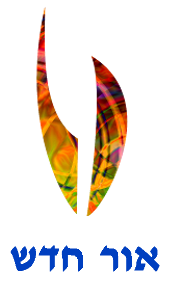By Cantor Hayley Kobilinsky
Each year as I prepare for the High Holy Days, I return to the familiar melodies that make up our Rosh Hashanah and Yom Kippur services. I no longer need to review the unique melodies of the Rosh Hashanah Amidah (prayers said while standing), because after chanting them a dozen times per year for over a dozen years, they are emblazoned on my mind. There is a great deal of consistency within the Amidah, the central portion of every prayer service, but there are certain changes that take place depending upon the time of day, weekday or Shabbat, or Holy Day. For example, on a Shabbat evening, our prayer for peace is the Shalom Rav, but on Shabbat morning, it is replaced by Sim Shalom. Not surprisingly, there are certain changes that take place during the Yamim Noraim (Days of Awe) to accentuate the unique timbre of the day. Some of the special insertions and melodies are so memorable, in fact, that I will confess that during the rest of the year I occasionally must remind myself to not include them! Perhaps, in order to survive in our liturgy through years of reductions and reformations, a tune must be catchy. Some of those melodies with staying power became known as misinai tunes, as though they’re so old, they must have been handed down at Mount Sinai.
The use of misinai tunes is traditional for both the Avot and the Gevurot, the first two benedictions of the Amidah. The Rosh Hashanah Amidah begins like any other as the congregation rises and begins to chant the Avot v’Imahot (Fathers and Mothers, or more idiomatically, Our Forebears): “Blessed are You, Adonai, our God and God of our fathers and mothers…” Already the congregation can detect differences in the melody, which has changed to reflect the introspection required during the Yamim Noraim (LISTEN). After words describing the love of our ancestors for God and the love God showed them and their later generations, the cantor, interrupting the usual text, leads the congregation in a singable melody with the words “Zochreinu l’chayim, Melech chafeitz bachayim, v’chotveinu b’sefer hachayim, l’ma’ancha Elohim chayim.” The melody for the “zochreinu” is typically considered by the congregation to be somewhat sacrosanct, despite the several different popular versions. In the following example, set by Max Janowski, the special text begins with a mysterious-sounding opening statement and rises to its highest note on the words, “Melech” (King), and “v’chotveinu” (and writes us). Thus musically, the melody highlights the supremacy of God and the urgency with which we pray to be written in the Book of Life, like our ancestors (LISTEN).
The following benediction, known as Gevurot, begins “Atah Gibor l’Olam, Adonai, m’chayei hakol atah rav l’hoshiah,” and often continues with an upbeat congregational tune for “m’chalkeil chayim b’chesed…” For the High Holy Days, that melody assumes a more solemn, though still rhythmic sound (LISTEN). The words “Mi chamocha” (who is like You?), which are always present in the Gevurot, are reiterated as part of the next High Holy Day insertion. Note the pleading nature the melody imparts on the word “rachamim” (compassion) in this next example written by Cantor Adolf Katchko. Following the brief insertion, the Gevurot reverts to its usual text, concluding the prayer with the very familiar High Holy Day theme: a descending minor triad (LISTEN).
Towards the end of the Amidah, in our prayer for peace, there is a lengthy, imploring insertion: “B’Sefer Chayim b’rachah v’shalom, u’farnasa tovah, nizacheir v’nikateiv l’fanecha anachnu v’chol amcha beit Yisrael l’chayim tovim ul’shalom.” (To borrow Dr. Richard Sarason’s translation: May we and all Your people the household of Israel be remembered and inscribed for a good life and wellbeing in the book of life, blessing, wellbeing, and prosperity.) Some settings weave this insertion seamlessly into the regular melody, while others highlight it with a complementary theme. Compare these two selections representing the composers’ choices, respectively: Ben Steinberg’s Shalom Rav (LISTEN), and Michael Isaacson’s Sim Shalom (LISTEN).
Like on other Holy Days, Rosh Hashanah’s Amidah omits thirteen petitionary prayers out of its possible nineteen, and replaces them with one prayer, Kedushat HaYom (The Holiness of This Day), which focuses on the special aspects of that day. The multi-part Kedushat HaYom joins the remaining six prayers, and will be the topic of next Thursday’s 10 Minutes of Torah as we continue to delve into the unique elements of the Rosh Hashanah Amidah.
Hayley Kobilinsky is Cantor of Congregation B’nai Yisrael of Armonk, NY, where she has served for the past eight years. Hayley is also an adjunct professor at the Hebrew Union College’s Debbie Friedman School of Sacred Music, and is President of Kol Hazzanim – Westchester Community of Cantors. Hayley recently began assisting in the coordination of Thursdays’ 10 Minutes of Torah.
